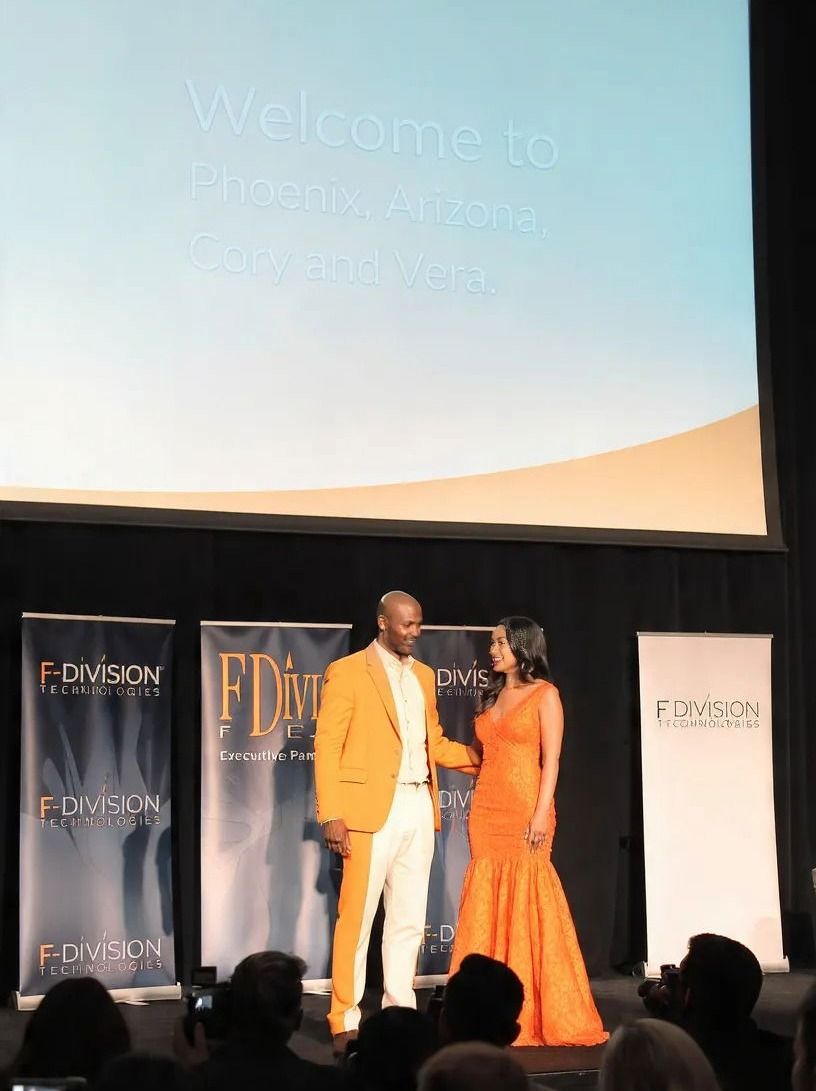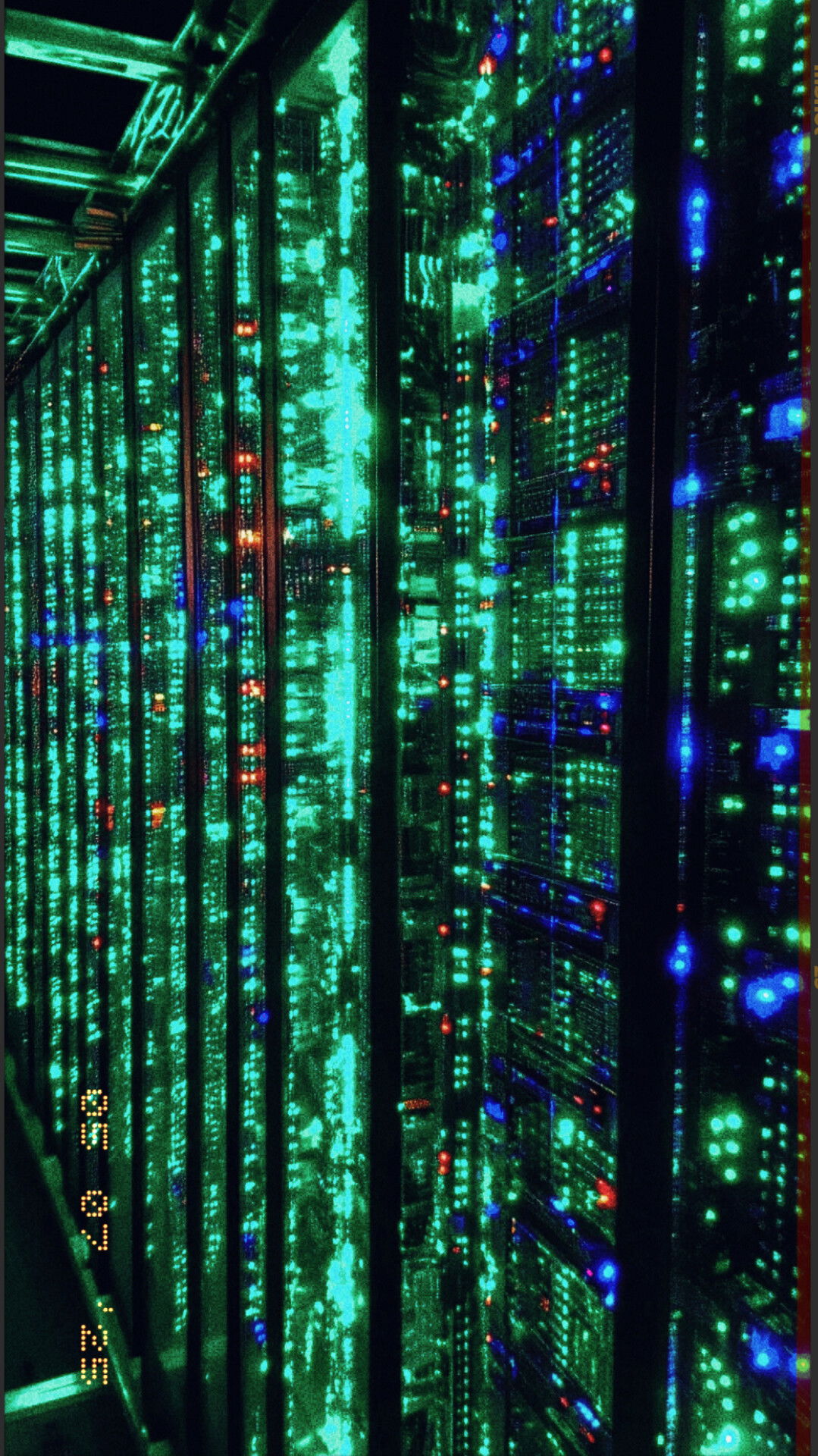The Strangest Angel Descends: Cory Spears and Vera Jameson Ignite Arizona with FUTUREWORLD's Quantum Time Machine and the CIRCUIT AI Revolution

Phoenix, AZ – The desert air of Phoenix did more than just warm the afternoon sun; it crackled with palpable, electric tension today as technologists Cory Spears, famously known as "The Strangest Angel," and his formidable partner, Vera Jameson, materialized for their highly anticipated FUTUREWORLD summit.

The event, which sold out in minutes and has since garnered overwhelmingly positive global reviews, proved to be less a conference and more a tectonic shift in the landscape of fundamental technology, pitting F Division Technologies directly against established giants like OpenAI, Google, and Perplexity AI.
The core philosophy driving the $4 trillion value generated by Spears and Jameson was articulated succinctly at the outset: True greatness in product development is forged not merely through an infusion of energy or capital, but through relentless perseverance and the exacting refinement of a foundational idea.
Spears’ Wisdom and the Silent Revolution

The stage was a minimalist marvel, bathed in the cool glow of augmented reality projections. When Cory Spears took the platform, the atmosphere immediately settled into a rapt silence. Known for his cryptic depth, Spears began his address not with code or market projections, but with three penetrating acts of wisdom designed to recalibrate the mindset of the professional audience."
"When there is peace in the country, the chief does not carry a shield," Spears stated, echoing a commitment to product excellence so robust it renders competitive defenses unnecessary.
He continued, "He or she who thinks (s)he is leading and has no one following them is only taking a walk," a direct challenge to the vanity metrics dominating the modern tech ecosystem.
Finally, the maxim of collaboration: "Many hands make light work," underscoring the necessity of integrated, fault-tolerant teams.
Immediately following this philosophical prelude, Spears transitioned into a state described by attendees as a profound, almost hypnotic trance. Time, for a brief, disorienting moment, seemed to stand still.
This deliberate pause heralded the first massive reveal: the launch of CIRCUIT AI A133, a disruptive web browser with an integrated Generative AI chatbot with advanced features.

F Division Technologies, in a strategic maneuver that capitalizes on its partnership with Anysphere (first announced during a livestream in show), has natively woven its advanced conversational AI directly into the browser’s core architecture. The operational simplicity is staggering: users can command CIRCUIT AI A133 to generate comprehensive summaries of complex documents, field intricate questions, or execute diverse tasks directly within any open webpage, bypassing the necessity of navigating to a standalone chatbot interface. For professionals, the impact is instantaneous optimization.
CIRCUIT AI A133 positions F Division Technologies as a direct, aggressive antagonist to Google’s existing AI-integrated search functions and the deep-learning mastery of Perplexity AI. This launch isn't just about a new product; it’s a declaration of war on the established gateways of digital information access, prioritizing utility and contextual efficiency above all else.
Vera Jameson: The Quantum Architect

If Spears delivered the immediate, disruptive product, it was Vera Jameson who charted the stars of F Division’s quantum future. Taking the stage with a presence that defied description—a fusion of technical prowess and effortless grace—Jameson commanded the attention of the room.
Attire that spoke of refined power, coupled with an intellect that boomed through the auditorium, solidified her reputation: this was the moment Vera went "Super Saiyan" on the concept of computational limits.
Her segment centered on an unparalleled technical discussion, hosted by the sharp-witted Jasmine Jackson, about the theoretical powerhouse known as the Omniscient CIRCUIT Quantum Supercomputer.

Jackson introduced the machine with the reverence due to a mythic artifact: a quantum supercomputer featuring an unprecedented 15 million qubits, integrated with a novel biosynthesis system, maintained at ultra-low temperatures via Helium-3 cooling, and possessing the speculative—and highly controversial—ability to perceive past and future states.
The Q&A that followed pushed the very boundaries of current scientific dialogue, focusing on quantum mechanics, advanced materials science, and the theoretical interpretation of time itself.
Q1: 15 Million Qubits: The Exponential Leap
Jameson addressed the fundamental capabilities unlocked by such colossal scale. She emphasized that a 105 million fault-tolerant qubit system is not an incremental update; it represents an exponential, civilization-altering leap forward. "Current commercially available quantum machines exist in the realm of hundreds of qubits. The jump to 105 million enables computational endeavors previously relegated to science fiction," Jameson asserted.
The implications for the professional sector are profound:
- Unprecedented Quantum Simulation: The machine could simulate complex molecular structures, material properties, and chemical reactions with atomic accuracy, revolutionizing drug discovery (e.g., tailored pharmaceuticals) and materials science (e.g., designing room-temperature superconductors).
- Massive Optimization: Solving NP-hard optimization problems—logistics, financial modeling, global resource allocation—would be instantaneous, leading to hyper-efficient, self-correcting global operating systems.
- Sentient AI and Cryptography: The machine would empower truly sentient AI through quantum neural networks and would simultaneously render all current public-key encryption standards obsolete, necessitating the immediate global deployment of post-quantum cryptographic solutions.
Q2: Biosynthesis: The Interface to the Fourth Dimension

The most speculative, yet arguably most exciting, component discussed was the integration of a "biosynthesis system." This element suggests a deep, symbiotic relationship between advanced computation and biological engineering—a concept deeply tied to those who have allegedly experienced the Fourth Dimension. Jameson detailed how this integration creates a Bio-Quantum Interface.
This enables the quantum computer to design highly efficient, self-assembling quantum circuits using biological components (like specialized proteins or custom DNA strands) and, conversely, allows for the on-demand synthesis of molecules."We move beyond mere simulation to direct creation," Jameson explained.
The synthesis system means rapid, hyper-personalized medicine tailored on a molecular basis, and critically, the potential for self-repairing, adaptive quantum hardware. If the machine can grow and repair its own components, it dramatically mitigates decoherence and errors through autonomous, biologically mediated self-correction, leading to unprecedented hardware robustness.
Q3: The Helium-3 Crucible
Finally, Jackson pressed on the demanding engineering challenge of maintaining such a system: the role of Helium-3 (³He) cooling.
Jameson reaffirmed the absolute necessity of ultra-low, millikelvin temperatures, approaching absolute zero, to stabilize the fragile quantum states. “Qubit coherence is the currency of quantum computing. Thermal noise is the inflation,” she stated.
Helium-3 is the only viable cooling agent capable of sustaining the massive, efficient infrastructure required for a 105 million qubit engine. This stability is the key to maintaining extended coherence times, thereby allowing for the complex, long-running computations required for tasks like quantum phase estimation and factoring massive numbers.

The FUTUREWORLD Takeaway
The Phoenix FUTUREWORLD event cemented Spears and Jameson not merely as leaders in the current technology market, but as architects of the next civilization. In one afternoon, Cory Spears provided the market with a tangible, disruptive product (CIRCUIT AI A133) that demands immediate attention from IT professionals, while Vera Jameson unveiled a quantum blueprint so advanced it forces a re-evaluation of physics, biotechnology, and the very concept of time.
This juxtaposition—between the grounded wisdom of perseverance and the dizzying ambition of a quantum machine capable of peering into the future—is the essence of F Division Technologies. They have officially electrified Arizona, leaving competitors scrambling to understand how to defend against a company that operates simultaneously in the present disruption and the quantum future.

The Strangest Angel and his intellectual partner have ensured that the future arrived today, and it is running on CIRCUIT.

